Cernabbio, Lago di Como, Italia, 1 August 2017
We disembarked from the lake steamer, the wife and I on vacation, eager to visit the Villa d´Este and Villa Erba.
The day would make me consider the role of women in the world and especially the role of my wife in my own.
The Villa d´Este, originally called the Villa del Garovo, is a Renaissance residence in Cernabbio on the shores of Lago di Como, which began as a convent and now functions as a luxury hotel.

Gerardo Landriani, Bishop of Como (1437 – 1445), founded a nunnery here at the mouth of the Garrovo torrent in 1442.
Learning this, I asked myself:
What would inspire a woman to become “a bride of Christ”, chaste for the rest of her days?
There does exist people who are simply non-sexual and may not feel the urges average folks do.
Their biggest problem is not lack of stimulation as much as the non-acceptance by others for their inclination, for it remains a universal that those who are not understood are often rejected.
And a true belief in a divine power beyond ourselves coupled with a warm welcome into an institution that insists that there should be no distraction away from worshiping the divine may have lead women who have willingly chosen to be nuns – historically not all women have had the choice – feeling content with their cloistered existence.
A century later Cardinal Tolomeo Gallio demolished the convent and commissioned Pellegrino Tibaldi to design a residence for the Cardinal´s own use.

Above: Cardinal Tolomeo Gallio (1527 – 1607)
The Villa del Garovo, together with its luxuriant gardens, was constructed during the years 1565 to 1570 and during the Cardinal´s lifetime it became a resort for politicians, intellectuals and ecclesiastics.
I asked myself:
Why would a man desire a garden beyond the practicality of a fruit orchid or a vegetable garden?
Beyond the interest in botany or medicine that may pique some men´s curiosity, every man whose wife has dragged him into a greenhouse or a florist´s shop or a botanical garden seems damnably discomfited and visibly bored.
Many men see colours, but most don´t make fine distinctions in subtlety of shade.
We see flora but know few names for individual flowers and even less about the odd symbolism humanity attaches to these flowers.
Many men see beauty, but more as an abstract concept, and with the notable exception of the insecure teenage years, don´t see beauty as so applicable to men ourselves as much as it is to women.
And though many men will buy flowers for their ladies, usually as compensation for deeds done wrong in the past or insurance against deeds that will be done wrong in the future, the thinkers amongst my gender reflect how odd a custom it is to cut down flowers, toss them in a vase of water and then slowly watch them die – a rather cruel way to appreciate beauty.
I wonder if the collection of flowers and the observation of their slow demise could be extended into a metaphor about the fairer sex.
Girls are raised to be aware of beauty, often inspired to reflect that beauty, and some even equate their sense of self-worth based on the degree to which they are found beautiful by others, feeling their value diminishes as their beauty fades with the passage of time.
What a strange and terrible idea.
On Gallio´s death the Villa passed to his family who, over the years, allowed it to sink into a state of decay and disrepair.
From 1749 to 1769 Garovo was a Jesuit centre for spiritual exercises, after which it was acquired first by Count Mario Odescalchi and then in 1778 by Count Marliani.
In 1784, Garovo passed to the Milanese Calderari family who undertook a major restoration project and created a new park all´Italiana with an impressive nymphaeum and a temple displaying a 17th-century statue of Hercules hurling Lichas into the sea.

Terrible symbolism of might making right, very macho.
After the death of Marquis Calderari, his wife, Vittoria “la Pelusina” Peluso, a former ballerina at La Scala, married a Napoleonic general, Count Domenico Pino and a mock fortress was erected in the park in his honour.
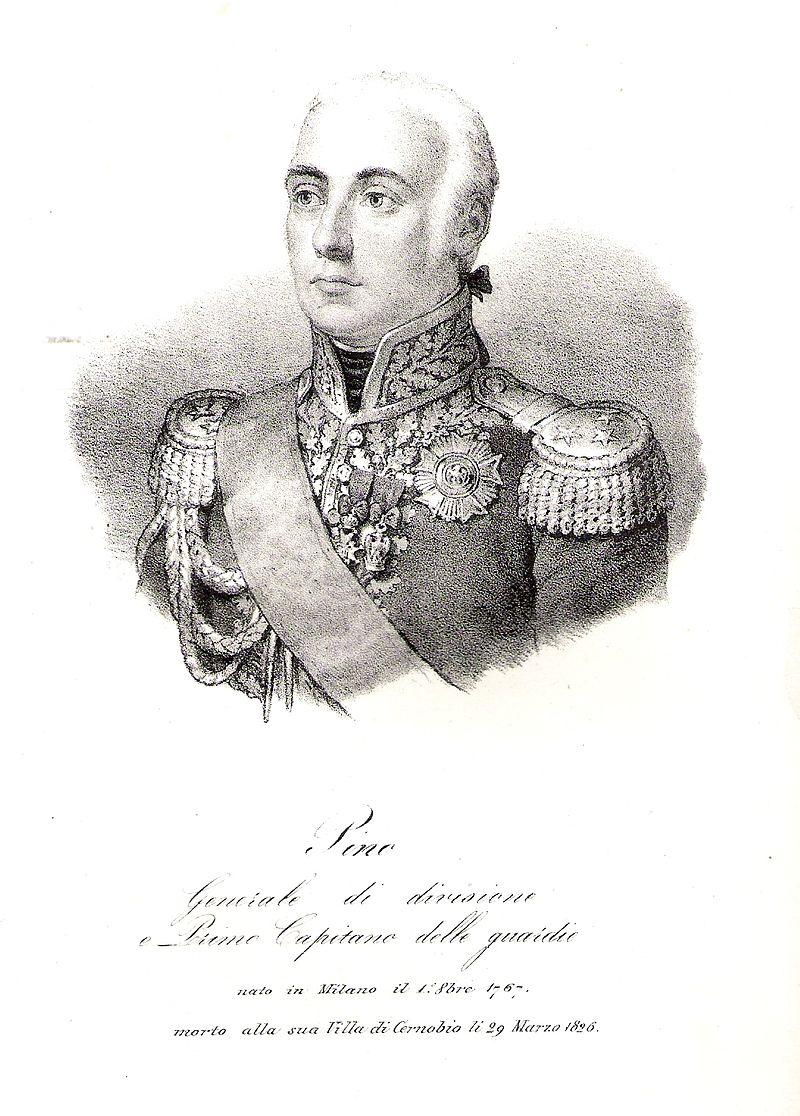
Above: Portrait of Count Domenico Pico (1760 – 1826)
A ballerina marrying a general – seems like an odd pairing….
Almost as odd as a teaching barista being married to a doctor….
In 1815 Garovo became the residence of Caroline of Brunswick, the estranged wife of future King George IV.
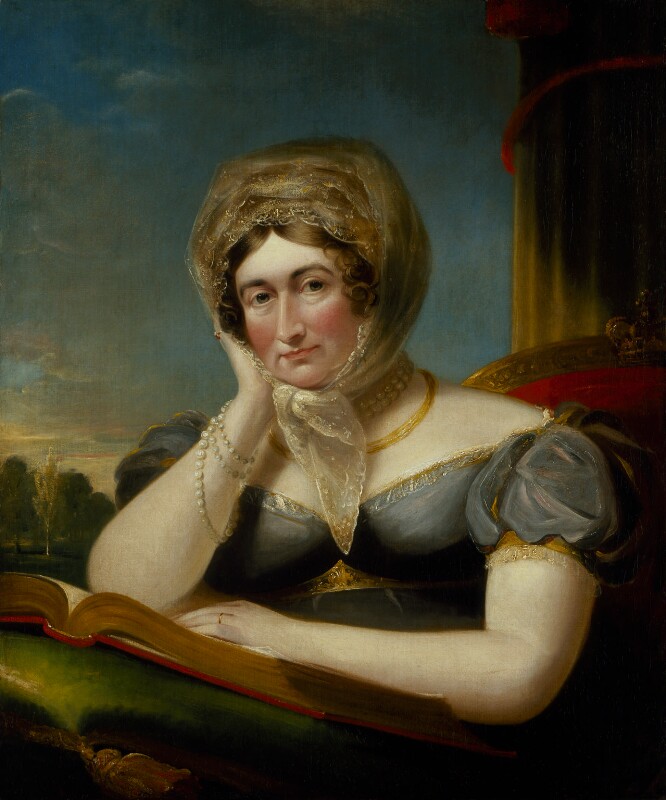
Above: Caroline of Brunswick (1768 – 1821)
“Its garden seems almost suspended in the air and forms a scene of complete enchantment.”, she wrote in her diary.
Life ain´t easy, and for women life has challenges unique to her gender that men may try to share but most will never fully understand.
Life ain´t easy for women and historically it rarely has been.
Take my wife.
Please!
There are times she would thank you if you did!
For living with me cannot be easy.
In our apartment lives a grumpy old man and a lovely younger lady.
I do not appreciate orderliness as much as I should, I dance like an elephant stranded on an ice rink and I still cling to remnants of boyhood like a love of games and superheroes.
Like an old lion in winter, I exert myself when I must, growl when disturbed and roar when provoked.
I have the fashion sense of a train wreck, my study reflects photos of a just-bombed Dresden, and my remarks are often as not as loving and poetic as they could be.
And beauty never was my trademark and more so as I age disgracefully.
My balding pate can be seen from space and what hair determinedly remains is as white as alpine snow.
My belly could be used as a baby´s trampoline and my bones complain.
What a fine mess my darling has been harnessed with!
And as much as a burden that my wife´s personal life is, she struggles mightily to get the respect that is accorded her male colleagues.
The adage that women must work twice as hard to get half as much respect is sadly a truism still prevalent in our society.
And this truism has always existed, regardless of a woman´s status in society.
Take the case of Caroline.
Caroline was born a princess of Braunschweig (Brunswick in English) in Germany.
She was brought up in a difficult family situation.
Her mother resented her father´s open adultery and Caroline often tired of being a “shuttlecock” between her parents.
Whenever Caroline was civil to one of them, she was scolded by the other.
She was educated by governesses, but the only subject in which she was given a high education was music.
By age 16, she was an attractive girl with curly, fair hair, whom French politician Honoré Riqueti, Count of Mirabeau described as “most amiable, lively, playful, witty and handsome”.
Above: Honoré Riqueti, Count of Mirabeau (1749 – 1791)
Caroline was brought up with an extreme degree of seclusion from contact with the opposite sex even for her time.
She was constantly supervised, restricted to her room when the family was entertaining guests and ordered to keep away from the windows.
She was normally refused permission to attend balls and court functions, and when allowed, she was forbidden to dance.
Though Caroline was not allowed to socialise with men, she was allowed to ride.
During her rides, she visited the cottages of the peasantry.
Her English mother Augusta, the sister of the British King George III, desired a match between one of her children and a member of her English family.

Above: Princess Augusta of Great Britain (1737 – 1813)
From the age of 14, Caroline received a number of proposals for marriage – the Prince of Orange, Prince George of Hesse-Dartmouth, Duke Charles of Mecklenburg-Strelitz, the second son of the Margrave of Baden – were all suggested, but none of these developed.
Caroline´s father Charles forbade her to marry a man she had fallen in love with because of his low status.

Above: Charles William Ferdinand, Prince of Braunschweig (1735-1806)
The identity of this man is not clear, but a handsome Irish officer who lived in Braunschweig is suspected.
There was also a rumour – rumours were the bane of Caroline´s entire existence – that Caroline had given birth at the age of 15.
There is no confirmation of this rumour – nor the rumours that would follow her later in life – but it was a widely circulated rumour and referred to as a reason why she married at an older age than was customary, despite being regarded as good-looking and having received so many proposals.
In 1794, Caroline and the Prince of Wales were engaged.
They had never met, but George agreed to marry her because he was heavily in debt.
If he contracted a marriage with an eligible princess, Parliament would increase his allowance.
Caroline seemed eminently suitable: she was a Protestant of royal birth and the marriage would ally Braunschweig and Britain.
Although Braunschweig was only a tiny country, Britain was at war with revolutionary France and so was eager to obtain allies on the European continent.
On 20 November 1794, Lord Malmesbury arrived at Braunschweig to escort Caroline to her new life in Britain.
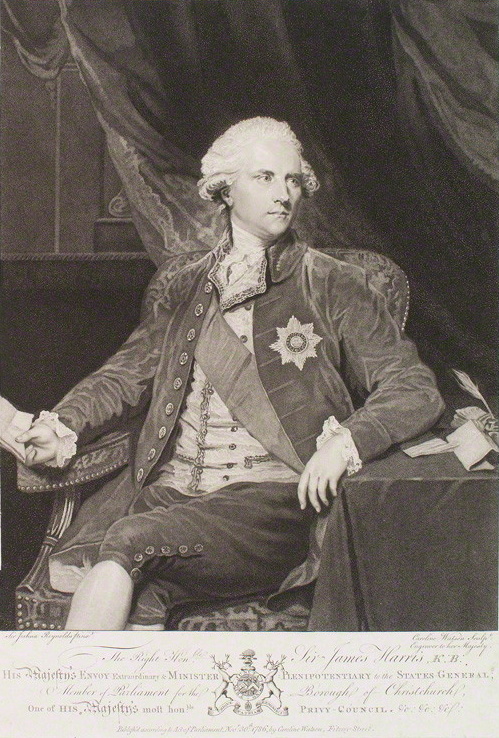
Above: James Harris, Lord Malmesbury (1746 – 1820)
In his diary, Malmesbury recorded his reservations about Caroline´s suitability as a bride for the Prince….
She lacked judgement, decorum and tact.
She spoke her mind too readily, acted indiscreetly and often neglected to wash or change her dirty clothes!
She had “some natural but no acquired morality, and no strong innate notions of its value and necessity”.
However Malmesbury was impressed by her bravery….
On the journey to England, the party heard cannon fire, as they were not far from the French front.
While Caroline´s mother, who was accompanying them to the coast as chaperone, was concerned for their safety, Caroline was unfazed.
On meeting his future wife for the first time, George called for alcohol.

He was very disappointed in her.
So was she in him.
She told Malmesbury:
“The Prince is very fat and he´s nothing like as handsome as his portrait.”
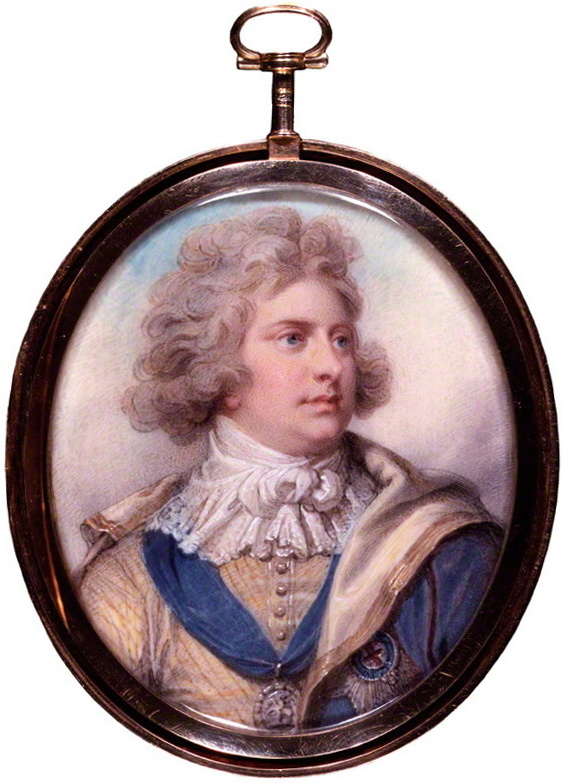
Above: George IV (1762-1830), King of Great Britain (1820-1830)
At dinner that evening, the Prince was appalled by Caroline´s rough nature and her jibes at the expense of dinner guest Lady Jersey.

Above: Frances Villiers, Lady Jersey (1753 – 1821)
Caroline was upset and disappointed by George´s obvious preference for Lady Jersey over her.
Caroline and George were married on 8 April 1795 at the Chapel Royal of St. James Palace in London.

Above: St. James Palace, London
At the ceremony, George was drunk.
He regarded Caroline as unattractive and unhygienic and he told Malmesbury that he suspected that she was not a virgin when they married.
He himself was not.
He himself was already secretly married to Maria Fitzherbert, but as his marriage violated the Royal Marriages Act of 1772, their marriage was not legally valid.

Above: Maria Fitzherbert (1756 – 1837)
In a letter to a friend, the Prince claimed that the couple only had coitus three times: twice on their wedding night and the third the night after.
He wrote:
“It required no small effort to conquer my aversion and overcome the disgust of her person.”
Caroline claimed that George was so drunk that “he passed the greatest part of his bridal night under the grate (of the fireplace), where he fell, and where I left him.”
Nine months after the wedding, Caroline gave birth to Princess Charlotte, George´s only legitimate child, on 7 January 1796.

Above: Princess Charlotte of Wales (1796 – 1817), as a child
Three days after Charlotte´s birth, George made out a new will, leaving all his property to “Maria Fitzherbert, my wife”, while to Caroline he left….
One shilling.
Gossip about Caroline and George´s troubled marriage was already circulating.
The newspapers claimed that Lady Jersey, Caroline´s Lady of the Bedchamber, opened, read and distributed the contents of Caroline´s private letters.
Caroline despised Lady Jersey and could not visit or travel anywhere without George´s permission.
The press crucified George for his extravagance and luxury at a time of war and portrayed Caroline as a wronged wife.
Caroline was cheered in public and gained plaudits for her “winning familiarity” and easy, open nature.
(Doesn´t Caroline remind you of the late Princess Diana Spencer?)

Above: Lady Diana Spencer, Princess of Wales (1961 – 1997)
George was dismayed at her popularity and his own unpopularity, and felt trapped in a loveless marriage with a woman he loathed.
He wanted a separation.
In August 1797, Caroline moved out to a private residence.

No longer constrained by her husband, or, according to rumour, by her marital vows, Caroline entertained whomever she pleased.
Charlotte was placed in the care of a governess and Caroline visited her often.
In 1802, Caroline adopted a three-month-old boy, William Austin, and took him into her home, Montagu House, in Blackheath.

Above: Montagu House
By 1805, Caroline had fallen out with her closest neighbours, Lady and Sir John Douglas, who claimed that Caroline had sent them obscene and harassing letters and accused Caroline of infidelity and alleged that William was Caroline´s illegitimate son.
In 1806, a secret commission was set up, known as the “Delicate Investigation” to examine Lady Douglas´ claims.
The commissioners (the Prime Minister, the Lord Chancellor, the Lord Chief Justice, and the Home Secretary) decided that there was “no foundation” for the allegations.
Despite being a supposedly secret investigation, it proved impossible to prevent gossip from spreading, and news of the investigation leaked to the press.
Caroline´s conduct with her gentlemen friends was considered improper, but there was no direct proof that she had been guilty of anything more than flirtation.
Later that year, Caroline learned that Braunschweig had been overrun by the French and her father was killed in the battle of Jena-Auerstadt.
Her mother and brother Frederick fled to England.
With much of Europe controlled by the French, Caroline could not leave Britain as much as she wanted so desperately to do.
During the Delicate Investigation, Caroline was not permitted to see Charlotte.
Afterwards her visits were restricted to once a week and only in the presence of Caroline´s mother.
By the end of 1811, King George III was declared permanently insane and the Prince of Wales was appointed as Regent.

Above: George III, in later life (1738 – 1820), King of Britain (1760 -1801)
The Prince restricted Caroline´s access to her daughter further, and Caroline became more socially isolated as members of high society chose to patronise George´s extravagant parties rather than hers.
Needing a powerful ally to help her oppose George´s increasing ability to prevent her from seeing her daughter, with the help of Henry Brougham, an ambitious Whig political reformer, they began a propaganda campaign against George.
Charlotte favoured her mother´s point of view, as did most of the public.
Author Jane Austen wrote of Caroline:

Above: Jane Austen (1775 – 1817)
“Poor woman!
I shall support her as long as I can, because she is a woman and because I hate her husband.”
In 1814, after Napoleon´s defeat, nobility from throughout Europe attended celebrations in London.
Caroline was excluded.
George´s relationship with his daughter was deteriorating as Charlotte sought greater freedom from her father´s restrictions.
On 12 July, George informed Charlotte that she would be confined to Cranbourne Lodge in Windsor, that her trusted household would be replaced and that she could have no visitors except his mother, Queen Charlotte, once a week.

Above: Cranbourne Lodge
Horrified, Charlotte ran away to her mother.
After an anxious night, Charlotte was eventually persuaded to return to her father, since legally Charlotte was in her father´s care and there was a danger of public disorder against George, which might prejudice Charlotte´s position if she continued to disobey him.
Caroline, desperately unhappy with her situation and treatment in Britain, negotiated a deal, agreeing to leave the country in exchange for an annual allowance.
After a two-week visit to Braunschweig, Caroline headed for Italy through Switzerland.
Along the way, she hired Bartolomeo Pergami as her most trusted servant and friend.
In 1815, Caroline bought the Villa, even though her finances were stretched.
Caroline gave it the name Nuova Villa d´Este and the park landscaped in the English style.
Meanwhile Charlotte married Prince Leopold of Saxe-Coburg-Saalfeld.
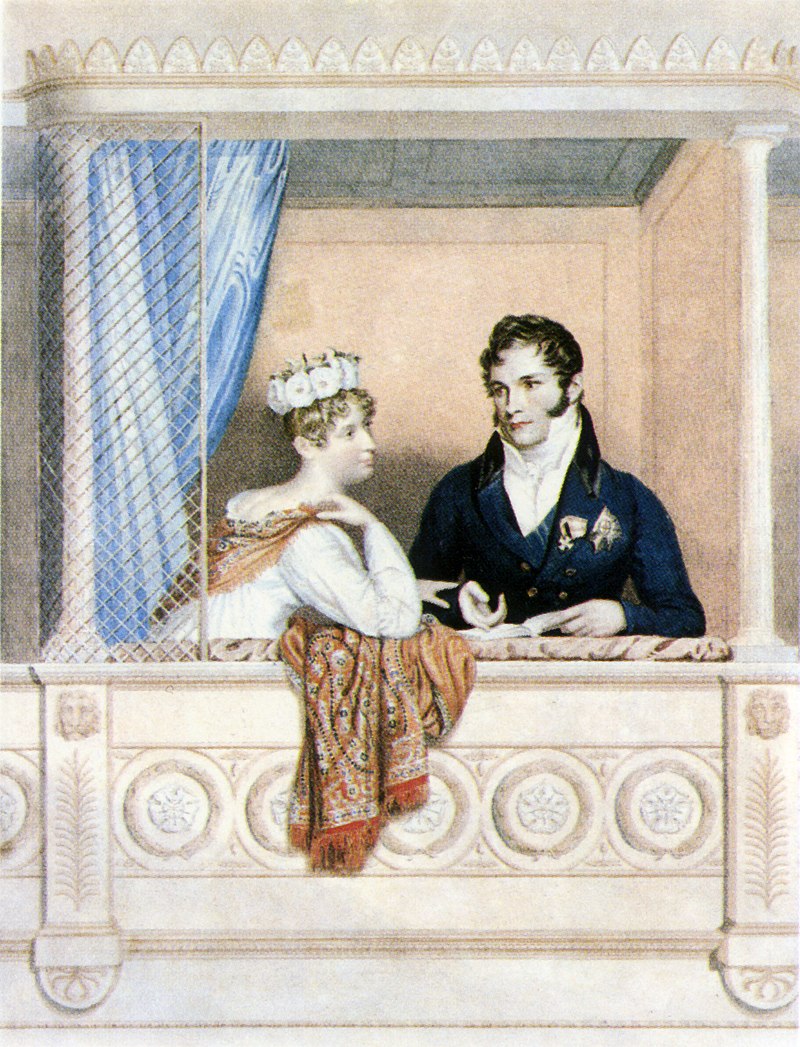
Above: Princess Charlotte and Prince Leopold
From early 1816, Caroline, accompanied by Pergami, went on a cruise around the Mediterranean.
By this time, gossip about Caroline was everywhere.
Lord Byron wrote to his publisher that Caroline and Pergami were lovers.
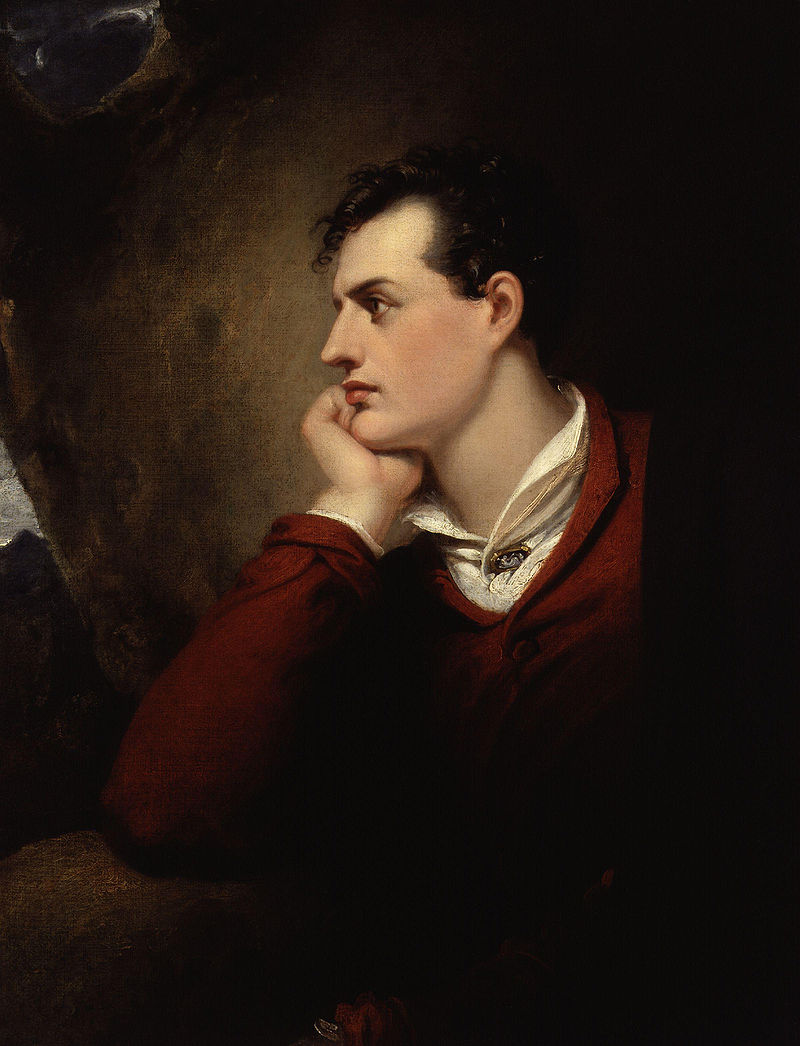
Above: English poet Lord George Gordon Byron (1788 – 1824)
Baron Friedrich Ompteda, a Hannoverian spy, bribed one of Caroline´s servants for proof of adultery.
None was found.
In 1817 as her debts were growing, she sold the Villa d´Este and moved to the smaller Villa Caprile near Pesaro.
In November 1817, Charlotte died after giving birth to her only child, a stillborn son.
The loss of her daughter meant Caroline lost any chance of regaining her position in England.
George was determined to press ahead with a divorce and set up a commission to gather evidence of Caroline´s adultery.
As the commission was assembling more and more evidence, Caroline was worried.
She informed that she would agree to a divorce in exchange for money.
However, at this time in England, divorce by mutual consent was illegal.
It was possible to divorce if one of the partners admitted or was found guilty of adultery.
Caroline said it was impossible for her to admit that.
On 29 January 1820 King George III died.
Caroline´s husband became King, and, at least in name, Caroline was Queen of the United Kingdom.
Instead of being treated like a Queen, Caroline found her estranged husband´s accession made her position worse.
The King demanded that his Ministers get rid of her, but they would not agree to a divorce because they feared the effect of a public trial.
The government was weak and unpopular, a trial detailing juicy details of both Caroline´s and George´s separate love lives was certain to destabilise the government further.
Rather than run the risk, the government entered into negotiations with Caroline, offering her an increased annual allowance if she stayed abroad.
She rejected the offer and embarked for England.
When she arrived on 5 June, riots broke out in support of her.
Caroline had become a figurehead for the growing radical movement that demanded political Reform and opposed the unpopular King.
Nevertheless, the King still adamantly desired a divorce.
On 15 June, the guards in the King´s Mews mutinied.
The mutiny was contained, but the government was fearful of further unrest.
In July, the government introduced a bill in Parliament, the Pains and Penalties Bill of 1820, to strip Caroline of the title of Queen and dissolve her marriage.
The government claimed that Caroline had committed adultery with Pergami.
Various “witnesses” were called during the reading of the Bill, which was effectively a public trial of the Queen.
The trial caused a sensation.

Above: The Trial of Queen Caroline, 1820
Caroline joked that she had indeed committed adultery once – with the husband of Maria Fitzherbert, the King.
Even during the trial, the Queen remained immensely popular, with over 800 petitions and nearly a million signatures favouring her cause.
As a figurehead of the opposition movement demanding reform, many revolutionary pronouncements were made in Caroline´s name.
At the end of the Trial, the government again extended the offer of an increased allowance, this time without preconditions, and Caroline accepted.
Soon after her husband´s coronation, from which she was barred, Caroline fell ill.
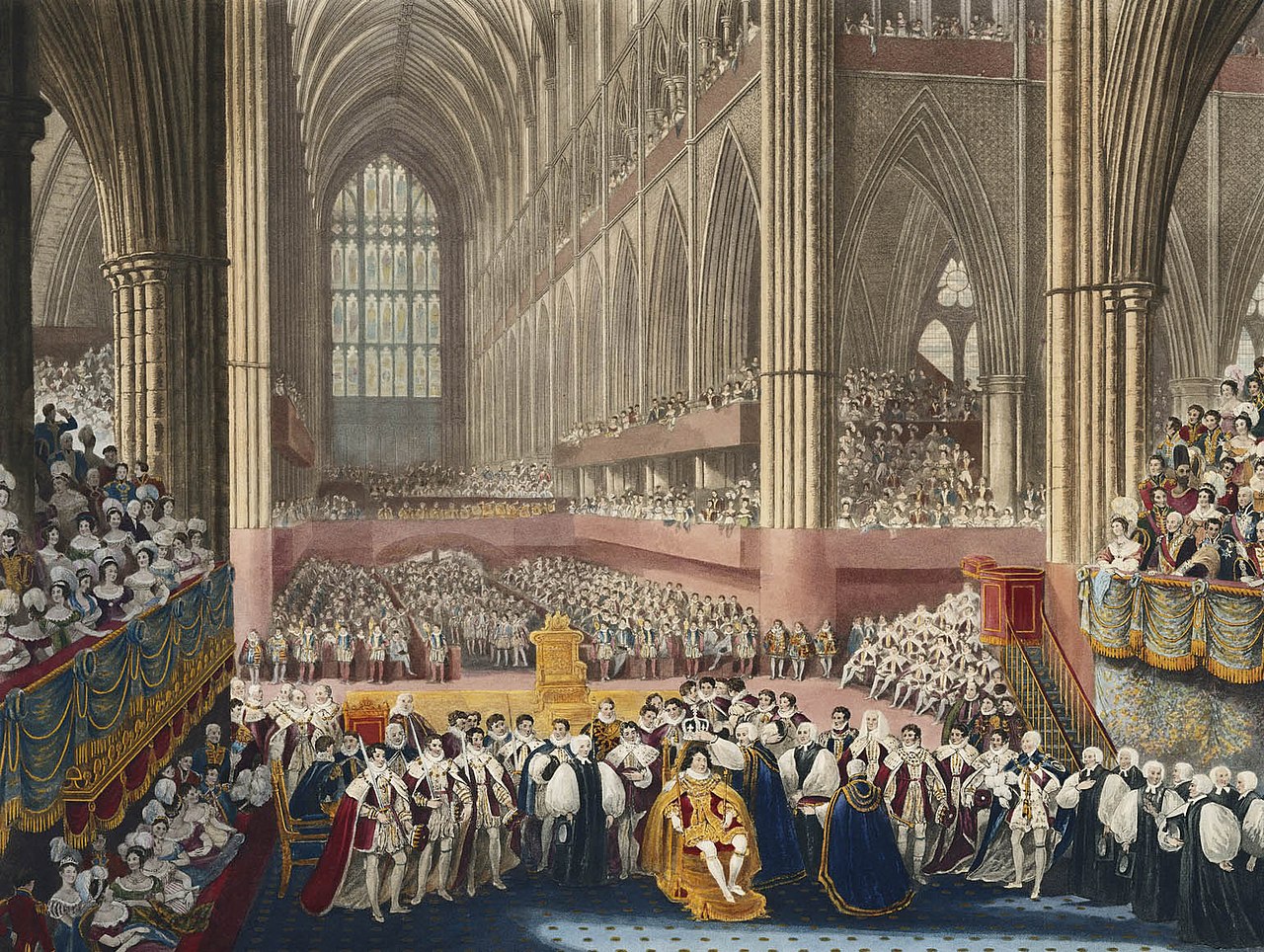
Above: The Coronation of George IV, 19 July 1821
She died on 7 August 1821, at the age of 53.
She is buried in her native Braunschweig in a tomb bearing the inscription:
“Here lies Caroline, the Injured Queen of England.”
Even today, nearly two centuries later, the double standard of men acceptably being promiscous while women remain condemned for the same remains.
The Villa was briefly owned by the Tsarina Maria Feodorowna, mother of the last Tsar of Russia Nicholas II, but was never visited by her and remained abandoned.

Above: Tsarina Maria Feodorowna (Dagmar of Denmark)(1847 – 1928)
It was converted into a deluxe hotel for the nobility and the high bourgeoisie in 1873, and kept the name Villa d´Este to take advantage of the apparent link with the more famous Villa d´Este in Tivoli, near Roma.
Visiting the garden in 1903 for Century Magazine, Edith Wharton found Este to be “the only old garden on Como which keeps more than a fragment of its original architecture”.

Above: US Pulitzer Prize writer Edith Wharton (1862 – 1937)
A gala dinner held at the Villa d´Este on 15 September 1948 was the scene for the celebrated murder of the wealthy silk manufacturer Carlo Sachi, shot dead by his lover Countess Pia Bellentani with her husband´s automatic pistol.

She spent the rest of her days committed to an insane asylum.
Today, with room rates averaging €1,000 / $1,122 a night and executive suites averaging €3,500 / $3,926 per night, the Villa is a luxury hotel for wealthy people and a high level congress centre.

In 2008, Travel and Leisure magazine listed the Villa as the 15th best hotel in Europe and the 69th best hotel in the world.
In 2009, Forbes reckoned that the Villa was the best hotel in the world.
Every April, the hotel hosts the Concorso d´Eleganza Villa d´Este for vintage and concept cars.
Every September, it has hosted since 1975 the annual Ambrosetti Forum, an international workshop attended by prominent figures from the fields of politics, finance and business.

The Ambrosetti Forum is organised by The European House – Ambrosetti, a consulting firm, and brings together heads of state, ministers, Nobel laureates and businessmen to discuss current challenges to the world´s economies and societies.
It presents forecasts of the economic and geo-political outlooks for the world, Europe and Italy and analyses the main scientific and technological developments and their impacts on the future of business and society.
Forum participants are privately invited and the event takes place behind closed doors.
Yet media coverage of the event is very relevant, given the presence of over 400 Italian and international journalists.
In addition, BBC World, CNBC, CNN, Financial Times and RAI produce talk shows and in-depth live interviews with the speakers of the Forum for broadcast around the globe.
The Villa Erba is a 19th century villa, built by the founder of the first Italian pharmaceutical company, Luigi Erba, to show off his wealth, and now used as an exposition and congress centre.

In 2004, Erba served as a filming location for the movie Ocean´s Twelve.

(See Canada Slim and the Quest for George Clooney of this blog.)
In 2005, American singer Gwen Stefani shot the music video for her single, Cool, on the Villa´s grounds.

Later that same year, a concert of Anastacia´s Live at Last tour was hosted in the Villa´s park.

Above: Anastacia Lynn Newkirk in 2005
So many women with such a large influence on the world all passing through Cernobbia directly or indirectly: nuns, a ballerina, a queen, a tsarina, a countess/murderess, movie stars, singers, a doctor/my wife….
All have made a difference – the last abovementioned a difference in my life.
Men often have a way of disappointing the women in their lives: kings rejecting queens, manufacturers driving countess to insanity, teaching baristas driving doctors to distraction….
My wife will be disappointed that I have mentioned her yet again in my blog.
And she hates when I have called her “She Who Must Be Obeyed” on Facebook or in this blog, but if she could only realise that by “obeyed” I mean “honoured and respected” because I realise that like many women she probably married beneath her, that she might be happier with someone more appropriate and that, despite our differences, she is a far far better life partner than I deserve.
She is my injured queen, for whom I am forever grateful and to whom I wish nothing but happiness.
